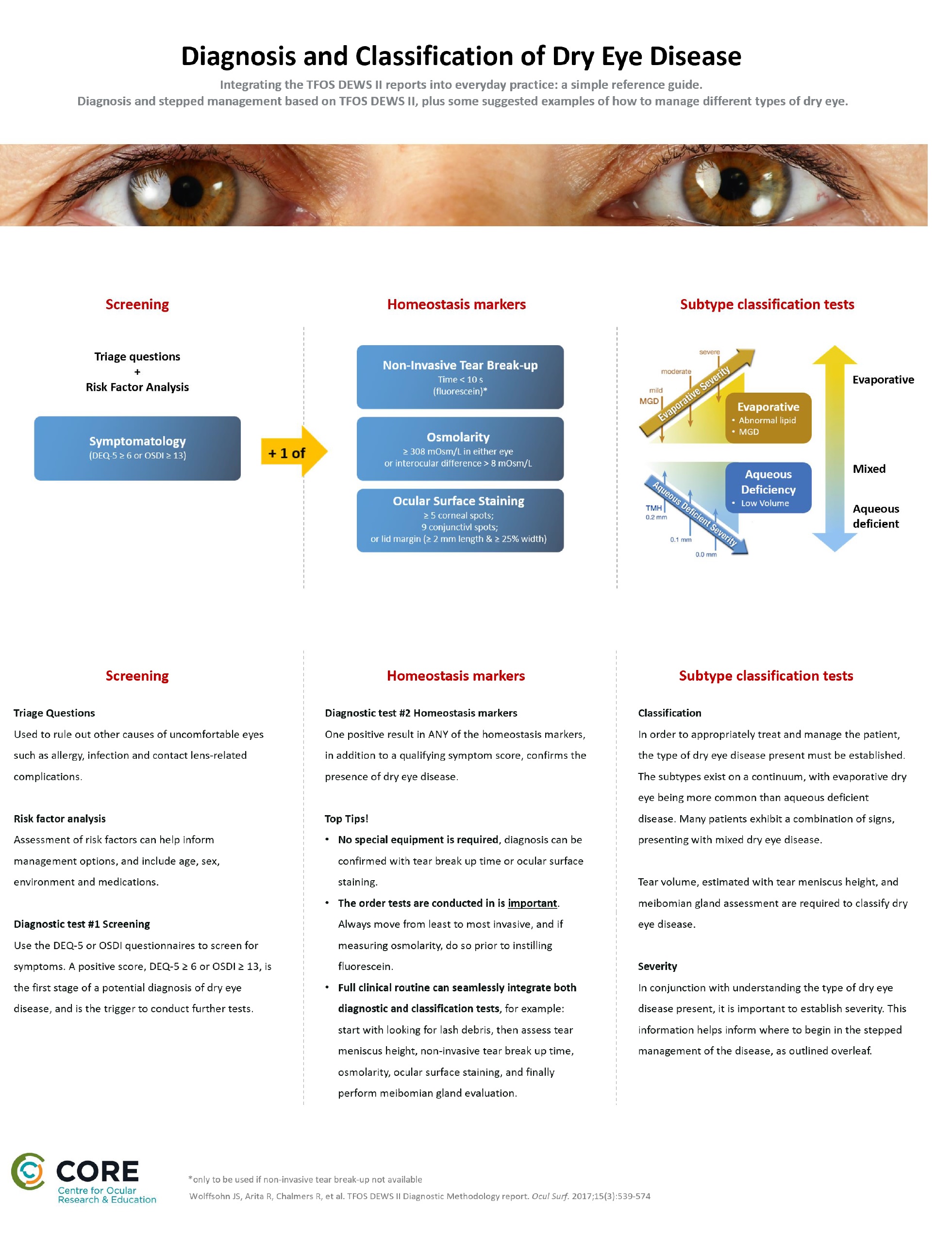Putting dry eye theory into practice

Diagnostic and classification of dry eye disease
The Centre for Ocular Research & Education (CORE) has published issue number 51 of its free online education magazine, Contact Lens Update.
For the first time, an entire edition has been dedicated to a single conference: the Canadian Dry Eye Summit, which was held in Toronto in mid-November.
“Clinical management of dry eye disease is front of mind for many practitioners as they explore building and expanding their contemporary evidence-based practice,” said Karen Walsh, CORE clinical scientist and Contact Lens Update editor. “We’re excited to bring the best of the Canadian Dry Eye Summit to professionals around the world through our newest issue.”
In its second year, the two-day conference delivered practical education to nearly 200 practitioners. Speakers ranged from authors of the Tear Film and Ocular Surface (TFOS) Society’s Dry Eye Workshop (DEWS) II report, to TFOS DEWS II global ambassadors, through to practitioners who were already successfully operating dry eye specialties in their businesses.
Key observations from the speakers are summarised in the editorial of the special edition along with a downloadable summary of the TFOS DEWS II diagnostic and treatment algorithms designed by CORE. The conference highlights section covers how to take steps to start or expand a dry eye practice. Nutrition and supplementation as they relate to dry eye are reviewed in the feature article, and a clinical insight focuses on the use of symptom questionnaires.
“We were delighted with the level of enthusiasm displayed by the practitioners attending the summit,” said Dr Richard Maharaj, specialist dry eye practitioner and educational chair of the conference. “We hope the education shared will help practitioners to better serve their dry eye patients, and believe this collaboration with CORE and Contact Lens Update will help disseminate that information to a much wider audience. Dry eye practice is a rewarding area in which to specialise. I encourage any interested practitioners to read this edition of Contact Lens Update, to consider attending one of our two conference dates for 2020 in Vancouver and Toronto and to stay engaged with our online learning resource which is currently being developed.”
In addition to a complete archive of back issues, ContactLensUpdate.com offers a resource library that provides no-cost professional tools, patient resources, images and video. It also houses complimentary technical training videos produced by the International Association of Contact Lens Educators, plus an industry glossary. Industry professionals can access the latest issue directly from ContactLensUpdate.com or sign up for email receipt of future issues. The publication receives support from the educational arms of CooperVision, Alcon and Johnson & Johnson Vision.